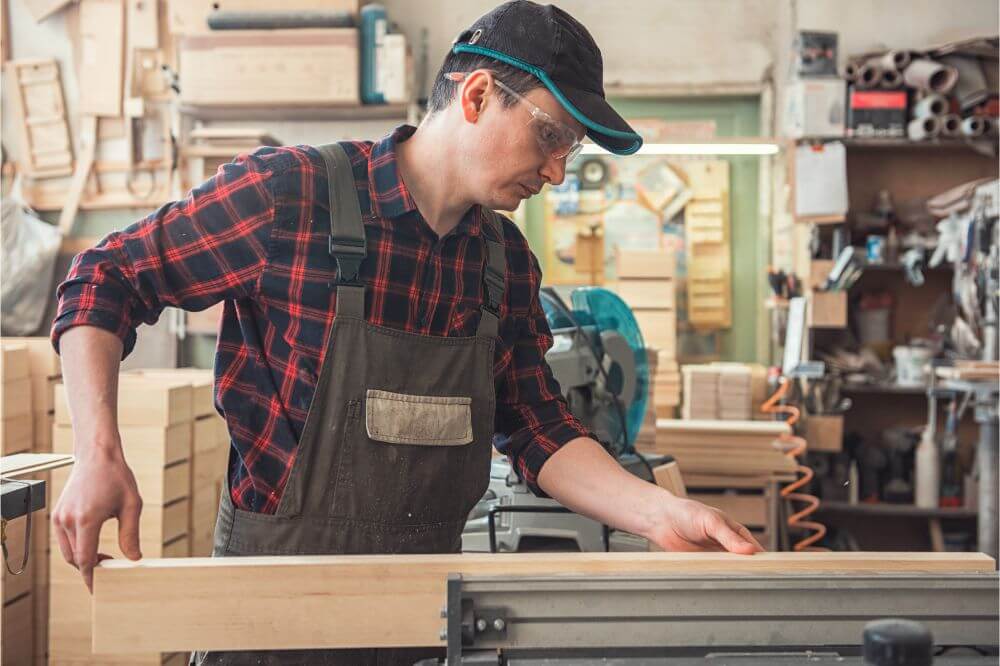
Woodworking, whether as a hobby or a profession, is hands-on, creative, and loved by people of all ages. For those you want to be able to woodwork whenever they choose, setting up a woodworking shop at home is the answer. In this article, we will cover some salient pieces of advice to help you plan, create and use your woodworking shop.
Contents
Decide What Tools You’ll Need
One of your first tasks to complete on your woodworking shop building journey is to figure out what kind of tools you will need. This will be based on what you are going to do in your shop and what you intend to build. If you already have some shop experience, you might be familiar with table saws, drill presses, disc sanders, band saws, chop saws, vices, etc.
If not, research them and their functions to determine if you want or need them. Even if you do not purchase them now, you might want to plan a space for them in case you do buy them in the future
Determine Your Woodworking Shop Layout
Once you know what you need, it’s time to figure out where these tools can go. Use a ruler to draw out the space you have to scale, be it a shed, outbuilding, a garage or any other kind of room. Start arranging the tools on paper by making boxes for their placement. Make two boxes for each tool in two different colors – one for the tool itself and the other (bigger one) for the working area for the tool.
Place the biggest of them such as the table saw, workbench with vices, and band saw and work your way toward the smaller ones such as the disc sander, edge sander, and chop saw. Do not hurry this step as it is important to have a proper layout planned before actually going ahead and building the shop.
Creating Space Around the Tools
It is necessary to consider how much space there will be around the tools. This space might be required for working with the tool itself or for another person to pass safely.
Make sure you have enough room both behind and in front of the table saw in order to cut large chunks of wood. Also, consider if you would be able to carry these larger pieces of wood around your woodshop and place them onto the tool without colliding with other equipment.

At this point, you might be concerned about the lack of space you have available for your woodworking shop, and you will not be the first to do so, especially when it comes to where you are going to position larger tools and your workbench. The good news there is plenty of solutions to this problem
One of the best is ‘The Ultimate Small Shop Guide,’ which is a fantastic resource for those who are dealing with creating a woodshop within a limited space. It has floor plans, layouts, storage ideas, and everything else you need to create a woodworking shop in rooms that can be as small as 7 feet by 7 feet.
Additional Tools and Accessories
The larger tools you install often require additional helper tools to function optimally. These should be stored near the larger tools so that they are readily available while working on a job. Examples of helper tools are throat plates, clamps, push sticks, arbor wrench, etc.
Though they are small and inexpensive compared to the previously discussed tools, they should not be overlooked while setting up your shop in terms of them being easily accessible when you are working
Using Peg Boards
If you are setting up a complete shop, you are obviously going to have a lot of hand tools and accessories. It is a good idea to set up a wall installed with peg boards to mount these tools.
As well as simple hand tools pegboards can be used to store many other items that you might find in a woodshop such as power drills, screws, nails, and they can even be used for storing caulk tubes.
Position these pegboards right behind workbenches but ensure that they are far enough away that they do not interfere with your work.
Keeping it Clean and Safe
Another important aspect of planning a woodworking shop is how you are going to keep it clean and safe. For example, the large amounts of sawdust and wood chips produced have to go somewhere after your work is done. To facilitate this, it is necessary for you to have a broom, trash cans, and if your budget allows, an industrial vacuum cleaner available.
If you can go all in, opt for a ventilation system that can suck all the sawdust and wood chips out of your woodshop as you work. Installing such a system might be on the expensive side but you will immediately see its benefits once you start working in the shop.
As for safety, we could write an entire article on that alone, but instead of that, we would advise you to read ‘The Ultimate Small Shop Guide‘ which has numerous tips and sensible advice on the ways you can make your woodworking shop as safe as possible.
Planning to Expand or Adapt?
The more you plan and the more you spend, you will soon realize that there is always another piece of equipment you can buy for your shop. It is possible that everything you equip in your workshop today may never be enough for all the projects you would like to undertake.
Keep this in mind as you set up your shop for the first time and incorporate room for future upgrades
If you have limited space you may have to prioritize now, and in the future, what tools you want in your workshop. Sacrificing specialized tools that you might use once in a year and instead, getting those which serve a wide variety of functions makes sense.

